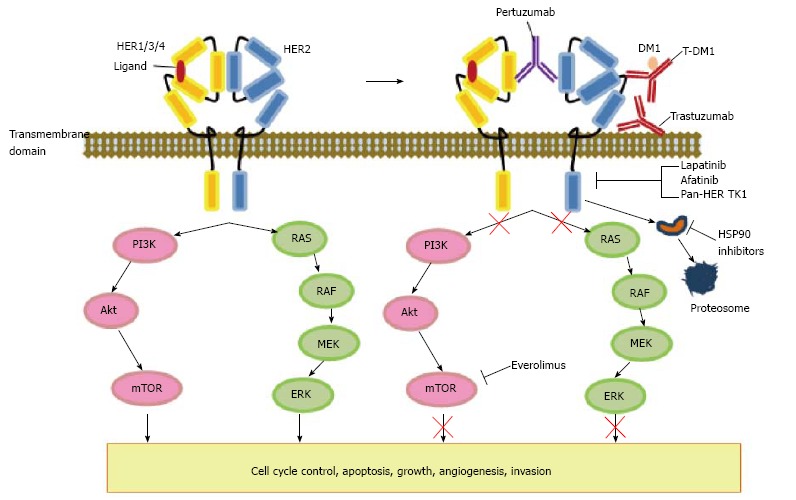Figure 1.

Human epidermal growth factor receptor 2 signaling pathway and interaction with other pathways. This demonstrates schematic representation of the HER-2 family of receptor and their interaction with downstream signalling, along the pathway which are responsible for a variety of biological processes involving cell cycle control, apoptosis, cellular growth, invasion, and angiogenesis. Examples of classes of drugs and corresponding compounds targeting the HER-2 network are also presented. HER1-4 are transmembrane proteins with associated tyrosine kinases. Heterodimerization result in tyrosine kinase activation with the subsequent signaling cascade, and subsequently activates downstream signals, including members of MAPK and PI3K/Akt/mTOR pathways. Trastuzumab and t-DM1 targtets to the extracellular domain IV of HER2. Anti-cancer activity of pertuzumab is interference with HER-receptor dimerization. Lapatinib, afatinib, and tyrosine kinase inhibitors (TKIs) compete for the binding of ATP in the intracellular domain of the receptors. HSP90 suppresses the NH2-terminal ATP binding site which leads to the degradation of client proteins by the ubiquitin proteasome pathway. HER: Human epidermal growth factor receptor; MAPK: Mitogen-activated protein kinase; MEK: Mitogen-activated protein kinase kinase; ERK: Extracellular signal-regulated kinase; PI3K: Phosphatidylinositol 3-kinase; mTOR: Mammalian target of rapamycin.
